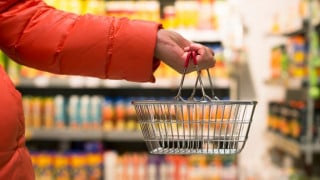The subsistence minimum; that is, the expenses recognised as necessary for a person, increased by 19.2%. According to the National Statistics Office of Georgia, the subsistence minimum for a working-age male in May 2022 was GEL 245.1 which is a record high figure.
The growth of the subsistence minimum is stipulated by rising consumer prices (inflation). One of the major challenges of 2021-2022 in Georgia is the sharp growth of prices; that is, double-digit inflation. According to the data of May 2022, the annual inflation rate reached 13.3%. In the last year, prices increased the most (by 22%) for food and non-alcoholic beverages.
First, it should be clarified that the current subsistence minimum shows the price changes of the minimum food basket and does not really reflect the basic needs of a person. In other words, the real subsistence minimum is much higher. However, the subsistence minimum is a good criterion in order to measure how expensive life (existence) has become in the country.
Graph 1: Subsistence Minimum of a Working-Age Male in 2020-2022 (GEL)

Source: National Statistics Office of Georgia
How is the Subsistence Minimum Calculated?
In accordance with the methodology of the National Statistics Office of Georgia, the subsistence minimum is determined based on the minimal food basket which is contains the necessary amount food for a working-age male’s life and his fitness for work; that is, this is the minimal amount of elements (proteins, fats and carbohydrates) and calories necessary. The food basket’s components were determined in 2003 by a decree of the Minister of Health and it contains 40 items of products in total – bread, cereals, meat, dairy, vegetables, confectionary, etc.) which amounts to 2,300 kilocalories.
The total cost of the products comprising the minimal food basket is divided by 0.86; that is, the so-called “bargaining ratio.” This is an assumption that as a result of bargaining, a person is getting a discount and buys a product 14% cheaper as compared to the market price. Afterwards, the value of a food basket is divided by 0.7 because the share of food expenditures in the subsistence minimum amounts to 70% and the remaining 30% is for non-food expenditures. The final figure is the amount of the subsistence minimum for a working-age male. Of additional clarification is that non-food expenses are not detailed as they stem from food costs. Therefore, only food prices affect the amount of the subsistence minimum.
The methodology for the calculation of the subsistence minimum needs to be revised and, in fact, the subsistence minimum is much higher. The aforementioned distribution of costs - food expenses at 70% and non-food expenses at 30% - significantly decreases the real subsistence minimum figure. In fact, the share of non-food expenses (which includes transportation, clothing, utilities, healthcare, etc.) is much higher as compared to the 30% of the current subsistence minimum.
Of note is that amending the methodology for the calculation of the subsistence minimum and setting a new subsistence minimum threshold was one of the campaign pledges of the Georgian Dream in 2012, although this pledge has not been honoured.
Changes in the methodology for the calculation of the subsistence minimum and determining the real subsistence minimum are critical since the subsistence minimum is one of the main benchmarks in order to implement a state social policy and plan social programmes. In addition, the subsistence minimum is one of the primary indicators in order to measure a country’s quality of life and its poverty level.







